 That’s right, class, following a slur of requests, many a kind nudge and a few elaborate threats, we are reviving The Beginner’s Guide to Mexican Food series and this time we’re diving into a dish that may not be as familiar to our readers, especially those from outside of the Americas, as the ones we’ve covered in the past. A bit odd in a sense as we are dealing with a dish here that is as simple and easy to cook as it is flavorful, and sports a culinary history that can probably be traced back to the very beginnings of meat-consumption in the Americas.
We’re talking ease of cooking, simplicity of flavor and waves of tradition here, we are talking Carnitas. Wait, what are Carnitas again?
That’s right, class, following a slur of requests, many a kind nudge and a few elaborate threats, we are reviving The Beginner’s Guide to Mexican Food series and this time we’re diving into a dish that may not be as familiar to our readers, especially those from outside of the Americas, as the ones we’ve covered in the past. A bit odd in a sense as we are dealing with a dish here that is as simple and easy to cook as it is flavorful, and sports a culinary history that can probably be traced back to the very beginnings of meat-consumption in the Americas.
We’re talking ease of cooking, simplicity of flavor and waves of tradition here, we are talking Carnitas. Wait, what are Carnitas again?
What are Carnitas?
Carnitas, Spanish for “little meats”, is a name used to describe a dish originating from the Mexico state of Michoacán consisting of tough cuts of pork cooked until pull-apart tender over low and slow heat. Following a lengthy cook the deliciously juicy nuggets of joy are usually pan- fried over high heat till crispy brown and delicious on the outside but still mouth-wateringly tender in the middle, then served slathered with salsa either as a filling for tacos or as a main dish of their own with a side of rice and/or beans. Now, if someone in the crowd at this point thinks “hey, that sort of sounds a lot like a kind of Mexican pulled pork! Or BBQ in general!” they would be completely forgiven. As it turns out several Mexican dishes like Carnitas and American BBQ, weird as it may sound, actually share a very important common culinary ancestor.Barbacoa: The origins of Carnitas (and BBQ)
That’s right, class, it’s time for the little known culinary fact of the day. Mexican Carnitas and American BBQ (as well as a slur of other similar dishes throughout the Americas) actually share a culinary origin story in an ancient Caribbean style of cooking known as Barbacoa. Thought to be originally practiced by the Taíno people of the Caribbean, Barbacoa describes a cooking style in which flavorful cuts of meat are either marinated or seasoned heavily before being cooked low and slow to preserve moisture and flavor while ensuring absolute tenderness. Originally, this was done by placing the meat on maguey leaves set over large fire pits dug into the ground thus flavoring the meat with smoke as well as spices. This tradition carried almost unchanged forward into the dying American tradition of open pit BBQ, while in Mexico, Barbacoa can refer to both open pit cooking and a version involving wrapping and submerging the meat with red hot embers in a pit and covering with leaves to steam to perfection before being unearthed and eaten.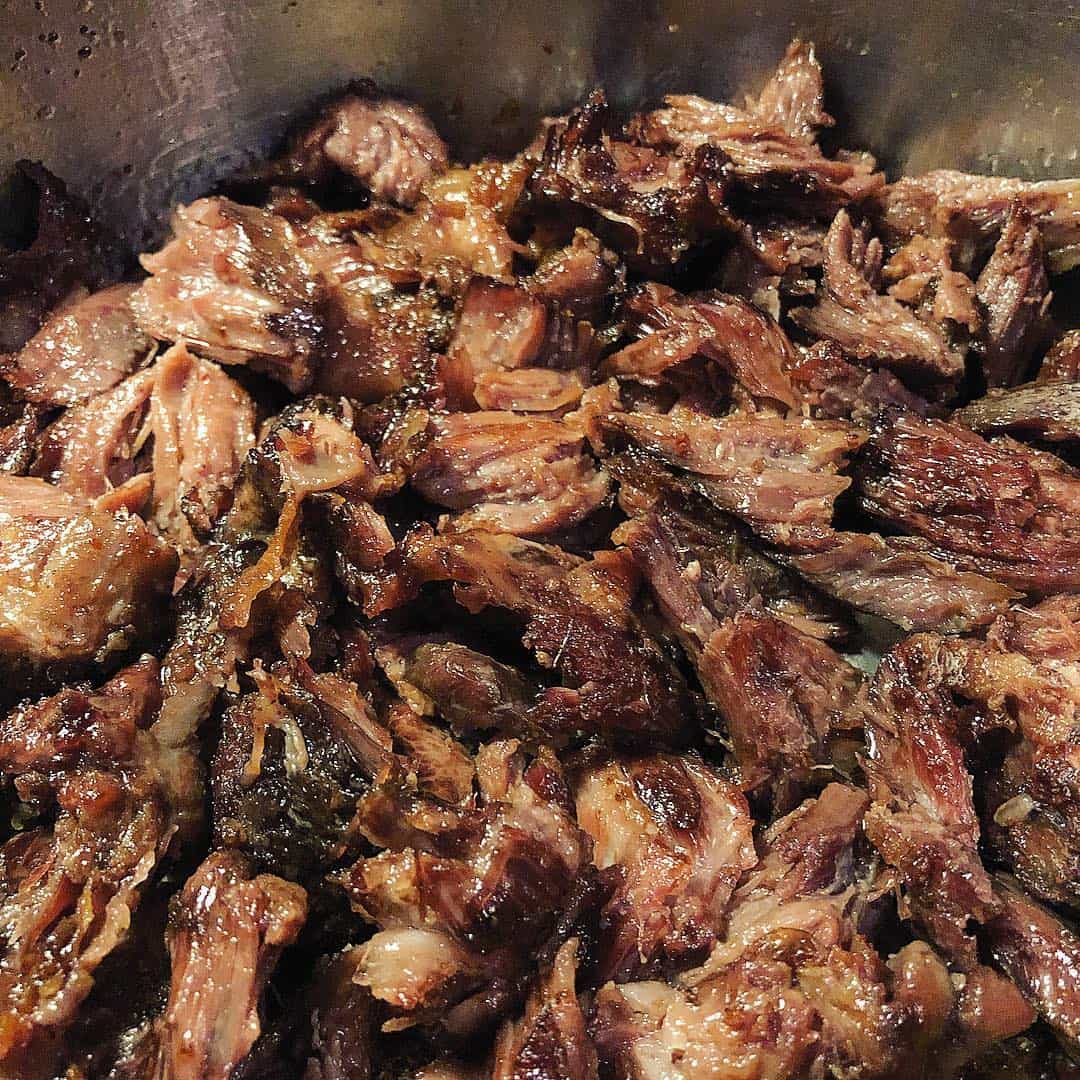
Juicy, soft, flavorful and slowcooked nuggets of pork… What’s not to love?
And then there are, of course, modern derived versions of Barbacoa such as Carnitas which, while sharing a common ancestor, has become their own dish entirely over time. Yeah, sorry, if you were getting your hopes up that we were going to make smoky Mexican BBQ, lovely as that would sound, you are sadly mistaken. We will, however, be making something equally delicious and beautiful. Carnitas, you see, while traditionally cooked over an open fire, were in their original form not cooked by low, slow, direct heat and smoke. Rather, they were cooked entirely submerged in lard within a copper pot suspended over the fire! And yes, if you’re wondering, lard is but another word for pig’s fat. We’re talking pig simmered in pig’s fat here. Or in simpler terms: precious metals, fire and fat, was life not wonderful in the good, old days?How to cook authentic and traditional Carnitas: tradition vs. the Internet
Well, not so according to quite a few home cooks of this day and age, apparently. Many modern recipes found on the internet forgo not only the use of copper cauldrons and open fires (a culinary sin somewhat acceptable given the hearth-less layout of most modern kitchens), but also leave out the lard, using instead a combination of large parts of water and a little bit of oil or fat… Fat, it seems, has become the devil and should be avoided. Cook the dish till the water evaporates, they say, then fry until golden brown and delicious, they say, citing obvious health reasons for the abandonment of hundreds of years of culinary tradition… The results, they say, will be equally as good if not better than the traditional method and quite a fair bit healthier.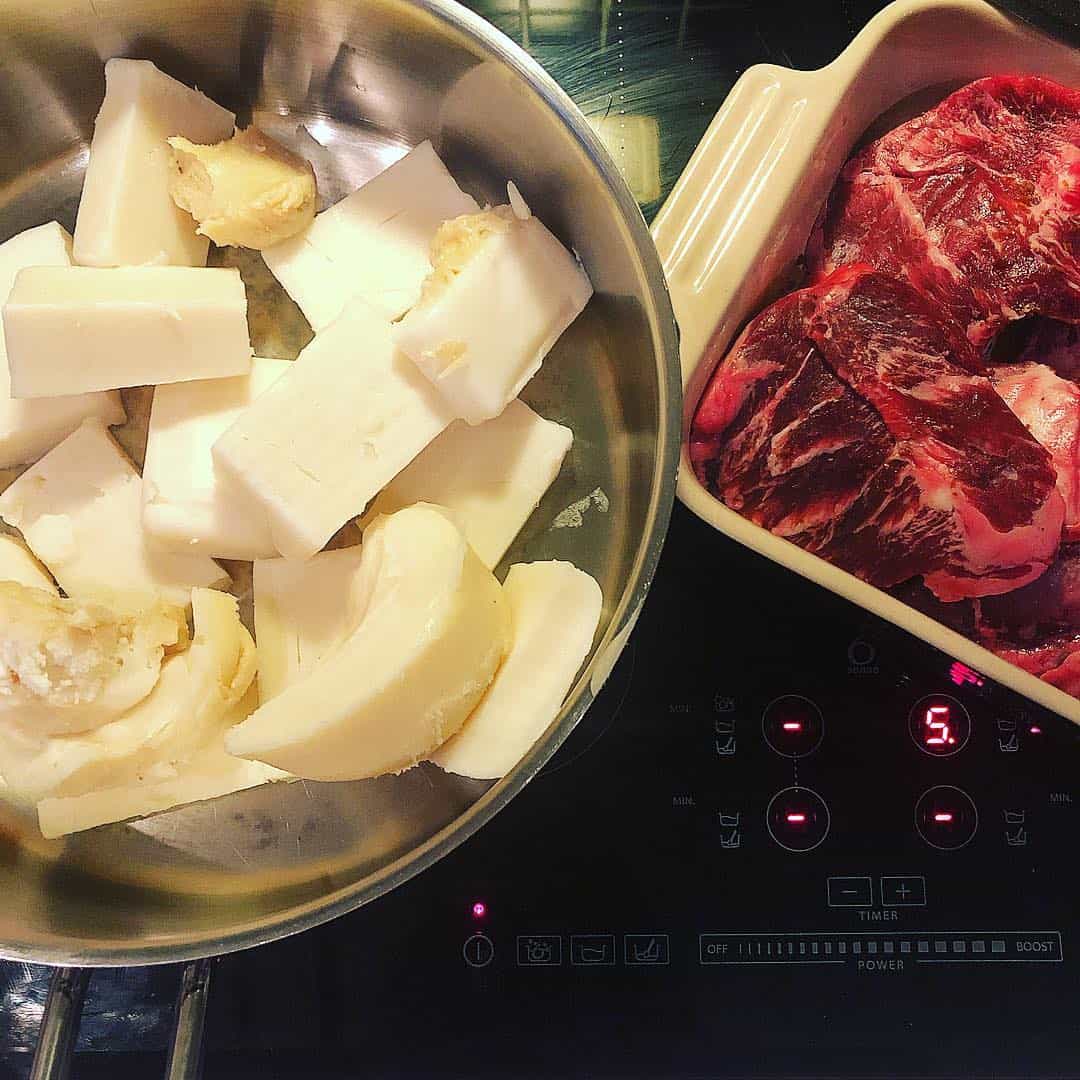
Go on… Praise the lard…! It’s really not that bad for you!
Well, dear internet, if you’ll but allow me a few minutes on my soap box, I shall blatantly point out the errors of your ways. While I do understand that ”enough fat to cover” seems like an awfully large amount of fat – hey, it actually is an awfully large amount of fat – and could, to the uninformed eye, be seen as excessive and unhealthy, I simply don’t buy the claim that cooking in water over fat should render the same exact flavors. The falseness of this claim is perhaps best explained by food blogger extraordinaire and culinary demi-god J. Kenji Lòpez-Alt who in his defense for confit (as the process of cooking by submersion in simmering fat is generally known) as an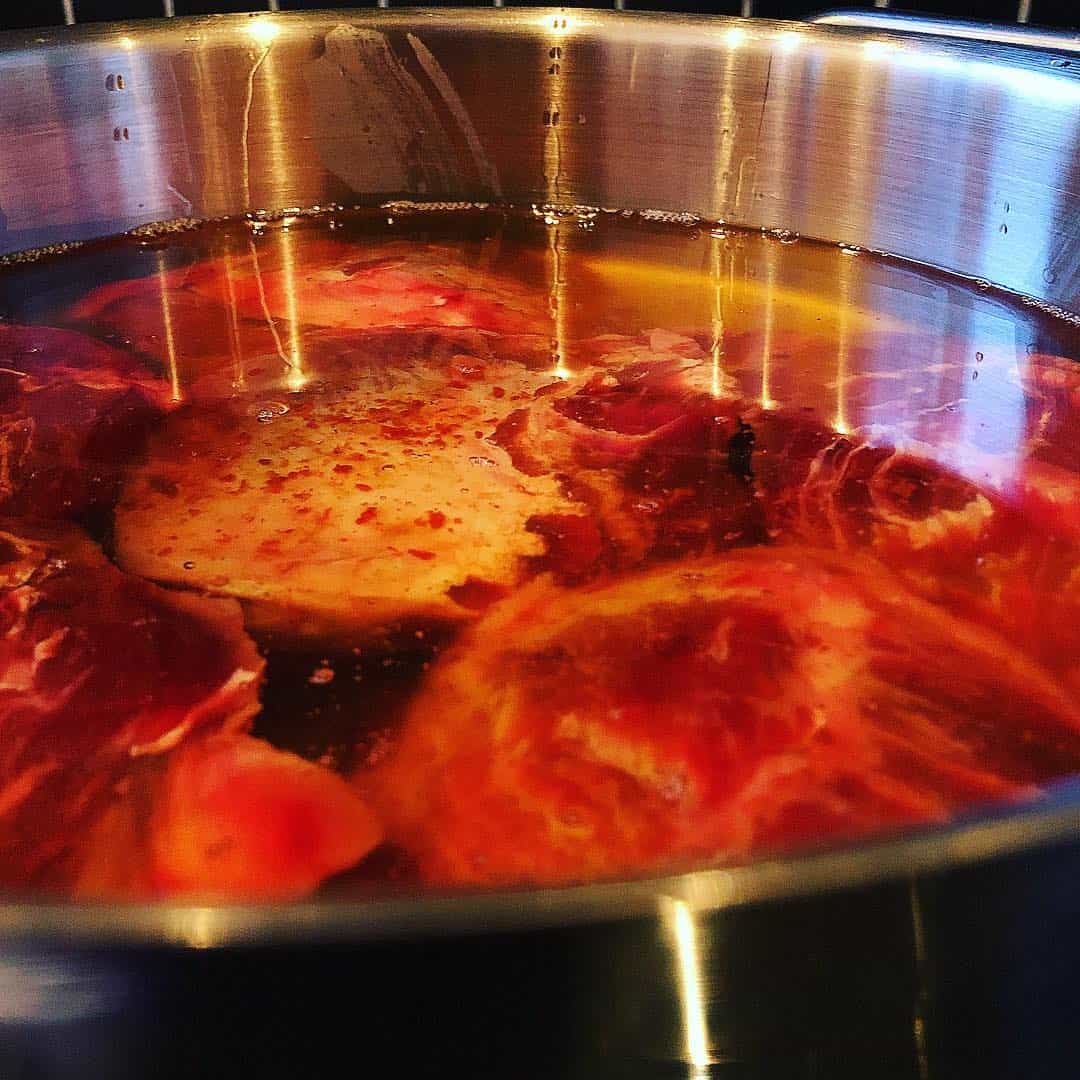
Confit of pork… Life on earth is good!
So let this be a call for reason, internet. Stand back, listen to science and cook your Carnitas the old-fashioned way! While I doubt you will see much of an increase, if any, in the amount of calories consumed, you’ll see a noticeable increase in flavor. Plus, you’ll end up with a tub of aromatic pig’s fat which can be covered, stashed in the fridge and used for various wonderful things, such as adding extra flavor to meats or vegetables, or authenticity to Mexican side dishes such as refried beans… What’s not to love!?What is the best pork cut for Carnitas?
The best cut of pork for Carnitas is not something that is generally up for debate. Most, if not all chefs and cooks around the world will tell you to go with pork shoulder for Carnitas, and for pretty good reasons! It should be pointed out, however, that many places in Mexico, Carnitas were traditionally prepared using the entire hog (or bits and pieces thereof) which obviously creates a variety in taste and texture much like that of whole hog BBQ. If a whole hog is not at hand (and this is one sin for which you would be forgiven, as opposed to that water over lard nonsense), you could technically use any fatty and muscular cut of pork which stands up well to prolonged cooking. Indeed, pork shoulder is the obvious choice here, but any good braising cut will work just as well if not better. I’ve come across several cases of pork belly Carnitas on my culinary journeys and in the pictures for this post the observant reader may have noticed that I am actually using pork cheeks for the job. Again, what matters most here is that you use a cut that is not to lean nor too pretty. For perfectly tender and tasty Carnitas, you’ll want something with a fair amount of fat in it along with some connective tissue, these, after all, are the two very components that make for a good low and slow cook. During the extended cooking process, the fat will render off and create an extra level of tenderness while the collagen in the connective tissue slowly transforms into gelatin, creating the melt in your mouth texture that we’ve come to know and love from slow cooked foods and BBQ. Which exact cut you choose, may well be up to personal preferences, but remember the old slow-cooking mantra: if in doubt, chose pork shoulder. Pork shoulder is cheap, easily available and contains about the perfect meat to connective tissue to fat ratio… Which probably goes to explain it’s massive popularity with BBQ folks around the globe! Really, what matters the absolute most here is that you get a decent quality of pork whichever cut you choose. If I’ve said it once, I’ve said it a million times (half a million times, maybe, but who’s counting?), your food is only as good as the ingredients you use and when it comes to pork, there’s a lot of really bad pork out there. As you will soon see, we shall treat our pork very humbly and very simply as to really expand on the natural flavors of the hog. And well, guess what, if our cheap piece of hog doesn’t have a lot of flavor to begin with, well, our resulting Carnitas won’t either.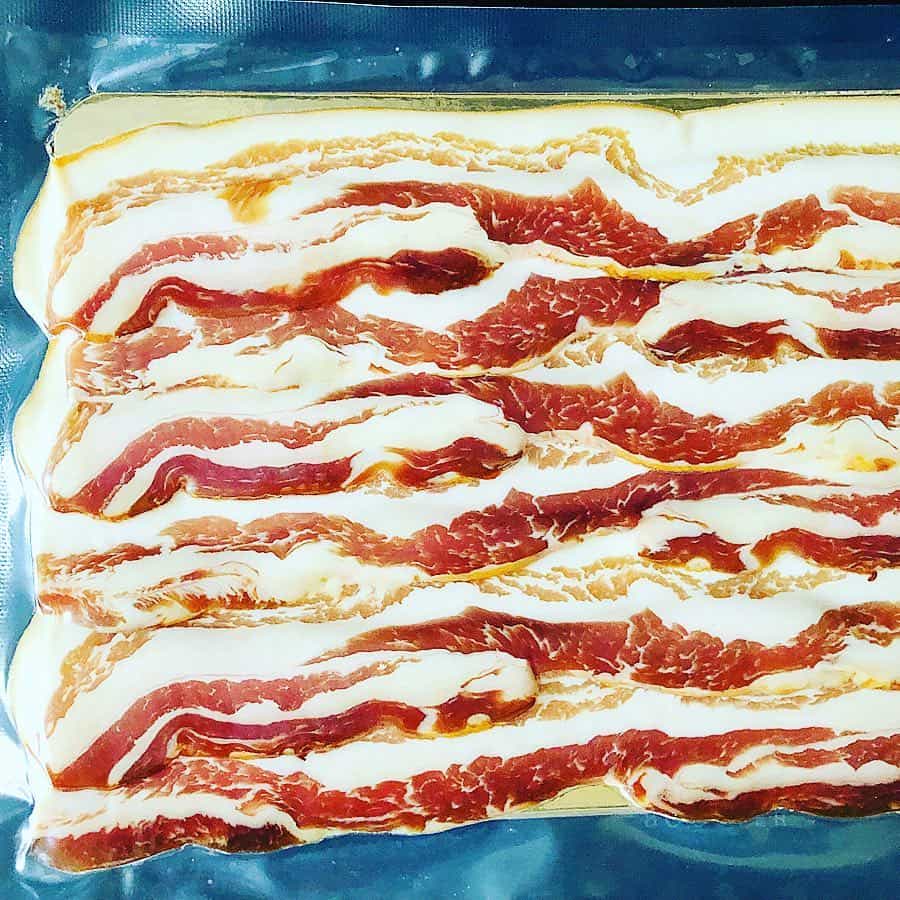
Fatty, happy, slow-raised, well-treated and expertly prepared pork belly… I love me a good piece of hog and I’m willing to pay for it!
And herein lies a problem of our modern world. Cheap, lean and raised under horrible conditions with ready access to antibiotics, growth hormones and other good stuff, the modern hog has not only become a sickling shadow of its former self, it has also become a rather bland ordeal. These are the sad results of supermarket economics and the main reason, if you ask me, that a shocking amount of people these days say they don’t care for the taste of pork. There is still hope for the inspiring Carnitas cook, however. Even if a world driven by profit, there are numerous smaller scale productions out there focusing on heritage breeds, animal welfare, organic production and natural feeds. These heroes of the industry produce fantastic meats with unique flavors and texture that are absolutely worth your time and money. To find these, you will have to talk to your local butcher, farmer, well-connected friend or even Google – it will take some work and a bit of money, but personally I’d rather eat less pork and know that the pork I do eat is of a substantial quality, free of chemicals and other nasties, and that my hard-earned money supports dedicated farmers with a clear set of ethics. And the flavor, by God, the flavor! If for nothing else, do it for the flavor. We need that flavor, for reasons that shall now become shockingly apparent:How to season authentic Carnitas: Simplicity is key
Previous meaty staples in our Beginner’s Guide to Mexican Food Series have featured some pretty strong spice profiles. Take our sizzling Carne Asada, for example, or the slow-cooked Pork al Pastor. They’re both drenched in spices and marinade and charred for additional flavor. But what about Carnitas, then? Well… That’s a different kind of story altogether. If we once again take to the big, wide internet and scour it for recipes for “traditional” and “authentic” Carnitas, you’ll find a myriad of different recipes calling for all sorts of marinades, spices and aromatics all of which, seemingly, have the only thing in common that they use the highly untraditional cooking method above for creating “authentic” Carnitas. But which is the correct method, then? Well, as is the case with most traditional recipes, sources differ on the matter but several of the more legit and trustworthy sources I have found state that Carnitas, as they were traditionally served in the the state of Michoacán, in fact consisted solely of pork seasoned with only salt and were, in fact, delicious in their simplicity.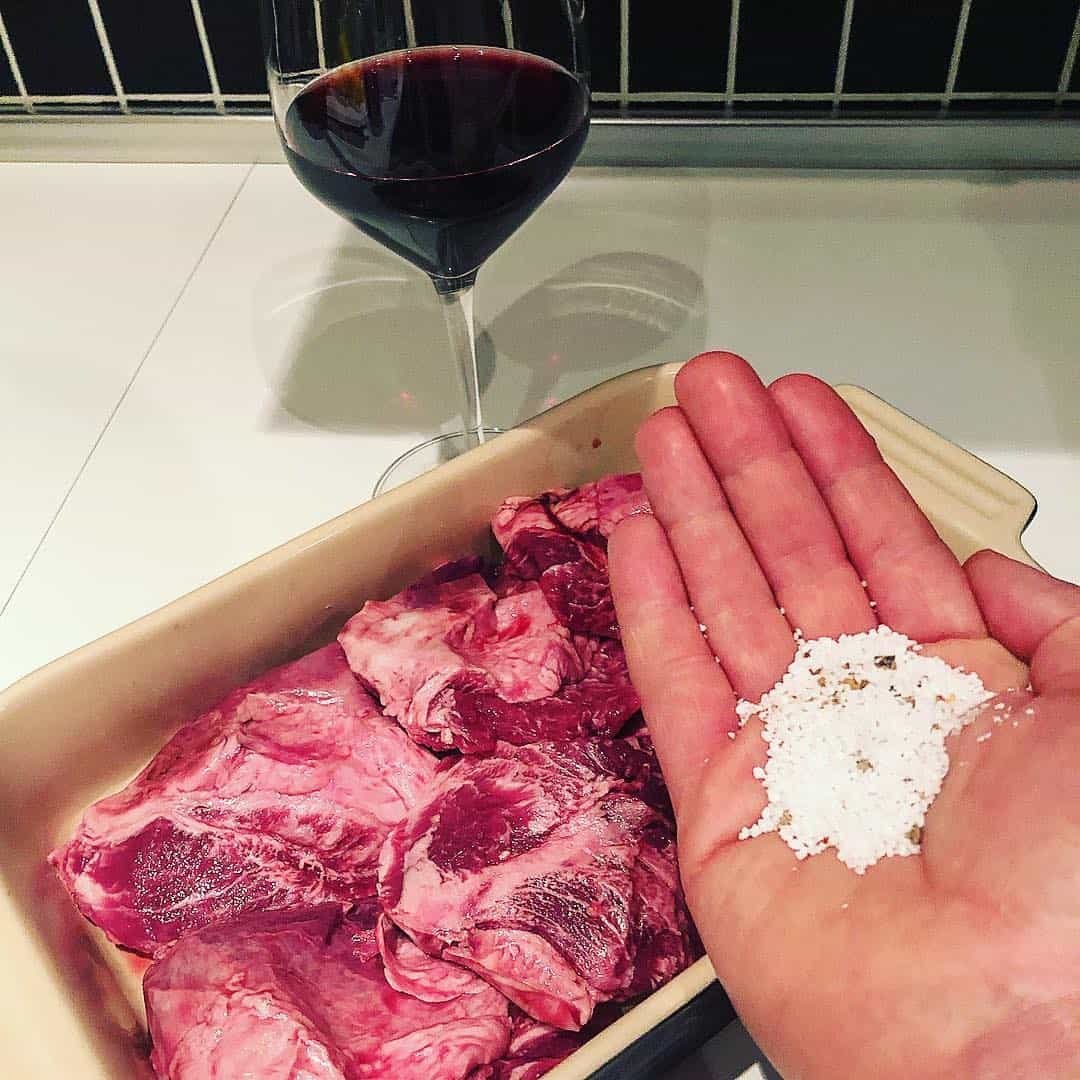
Pork + salt + lard = Carnitas!
In a way, this all makes a strange kind of sense. Some sources describe Carnitas as a special occasion food often enjoyed in less affluent rural areas. A sort of poor man’s feast if you will. Given that such a feast generally involved the slaughter and cooking of an entire hog, it makes sense that you would want to taste the hog, not the seasoning. I hope the truth doesn’t disappoint you given my lengthy and opinionated rants about this dish. What this means, you see, is that to make one of the cornerstones of Mexican cuisine, we need only a couple of chunks of pork which we will salt heavily and leave to cure overnight before submerging them in barely boiling fat and cooking them forever. It’s that simple. Really. This, essentially, makes Carnitas the simplest dish we have ever created in our Mexican food series – and at the very same time perhaps the most versatile. The flavor of Carnitas come not from a slur of spices and seasonings, but rather from pure porky goodness. With Carnitas, you taste the meat, the lard and the cooking process, that is it. Whatever bolder flavors you may want to introduce to the party come in the form of salsas or various other toppings. Want it tangy? Spoon on a Salsa Verde. Want it hotter? Try a Salsa Roja? Need it creamy? Pile on that Guacamole! The options are endless… And with that, let’s get down to business, shall we?
Traditional Carnitas: Authentic Recipe
The flavors in this tradtional and authentic Carnitas recipe from the Mexican state of Michoacán comes not from a bunch of herbs and spices, but rather from the lack thereof. This is the classic and simple recipe for Carnitas to which you can add your own flavors in the form of salsas, spices and side dishes.
Ingredients
- 2 kilos pork shoulder cut into 5 cm x 5 cm cubes
- 1 kilo lard can substitute bacon fat or beef tallow
- 20 grams kosher salt
Instructions
-
Season pork generously and evenly with salt and refrigerate overnight.
-
Come next day, remove the meat from the fridge at least an hour before cooking to let it come to temperature.
-
Carefully melt lard or other fat in a heavy bottom Dutch oven.
-
Once fat has melted, carefully add the pork to the Dutch oven, making sure it is completely submerged in fat.
-
If pork is not completely submerged add a bit of oil or extra fat as needed.
-
Cover the Dutch oven with a lid and place in a 100C oven and cook about six hours or until fork tender, then evacuate from the oven.
-
In a colander set over a bowl, carefully drain all the fat from the pork pieces, return the Dutch oven to the stove top and heat over medium high heat.
-
Add enough of the reserved cooking fat to cover the bottom of the Dutch oven by at least a couple of millimeters.
-
Add cooked pork to the Dutch oven and carefully brown on all sides until golden brown and delicious.
-
Move pork pieces to a cutting board and rest for a few minutes before pulling a part using either a couple of forks, your fingers or other suitable pulling devices.
-
Serve immediately as taco filling or with Spanish rice or Refried Beans
Recipe Notes
With only three ingredients in play here, quality is, of course, key. Talk to your butcher about his best possible pork for the job and take the time needed to cook things low and slow to absolute tender perfection.
How to serve Carnitas
The perhaps simplest and most traditional way of serving Carnitas is in the shape of our favorite Mexican food delivery vessel, a taco! For sheer joy of simplicity try a pile of freshly cooked Carnitas on a homemade corn tortilla. Serve it as simple as they would in Mexico with a sprinkling of chopped white onion and a few sprigs of cilantro. And that’s about all you need to be happy. A bit of finely shredded cabbage would do very nicely as well. Want to take things a bit further? Well, you can do as I do. I’m a bit of a chili head myself so if I were hosting a Carnitas party, I would probably add a healthy dollop of my hot and tangy Salsa Roja and about a dozen Coronas for good measure. Everybody’s favorite avocado-application, Guacamole, works superblywith Carnitas as well, but then again. When is guacamole ever not a good idea?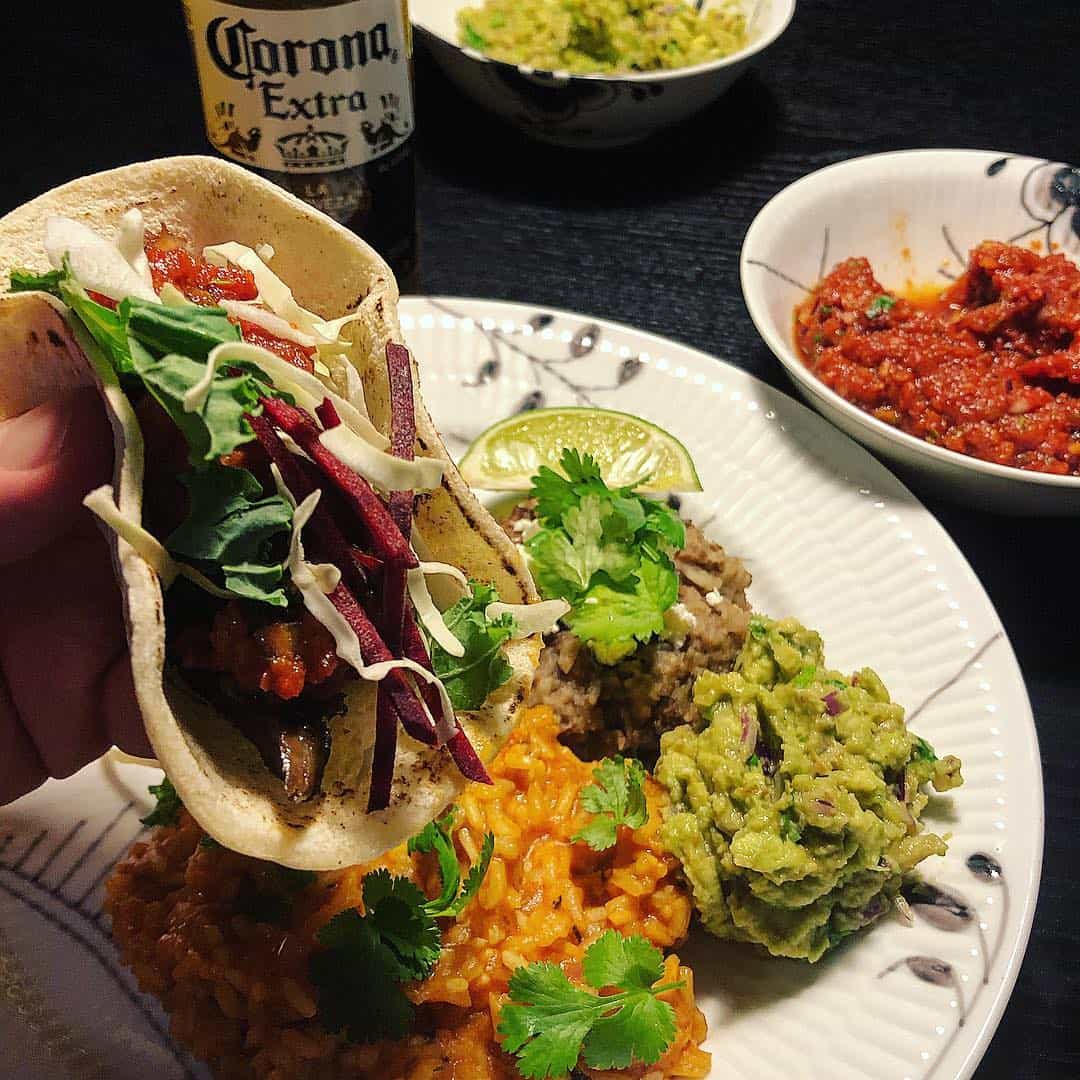
Carnitas, tortillas, a bit of cabbage, Spanish rice, beans and guacamole… I shall call you Saturday night and you shall be my friend!
Speaking of sides, if tacos are not your thing (or you simply crave more carbs and protein like this food blogger), Carnitas can easily be served as a plated meal (with or without tortillas) featuring a side of shredded cabbage or lettuce, your choice of salsas and two of my favorite Mexican side dishes par excellence: Spanish rice and refried beans. These latter two dishes (fully worthy of a post of their own in the future) are exceedingly suited for the job as they are usually made using a fair amount of cooking oil – an ingredient that can, you guessed it, easily be swapped for the highly flavorful lard that has resulted from the Carnitas cooking process… But that’s the subject of another post. Our next in the series, perhaps?
So no seasonings are needed? Less is more…
In my case, I prefer to make the sauces and toppings do the talking 🙂